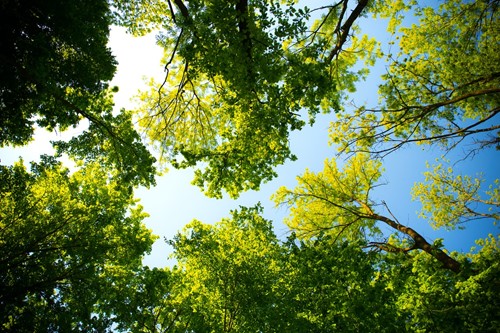Solomon's Seal & Other Perfect Plants for Shaded Gardens

A shaded yard or garden space might seem like a challenge. However, there are many plants like Solomon's seal that prefer partial to full shade. If you're searching for plants to fill your shaded garden, here are some suggestions to consider:
Solomon's Seal
Solomon's seal plants have long, arching vines with rows of hanging flowers resembling tiny lanterns. This shade-loving plant also loves plenty of moisture and will thrive in cool, damp gardens. There are over 60 different varieties of the plant with different foliage and flower colors to fit your specific taste.
Periwinkle
Periwinkle, also called "creeping myrtle," is an excellent ground cover for shady areas. It's a popular choice of plant for underneath large trees where lawn grasses wouldn't get enough sunlight. Periwinkle vines spread rapidly across the ground and produce purple star-shaped flowers. One important thing to note is that this shade-loving plant is considered invasive in certain regions, so take measures to keep it contained to your own property.
Hosta
Hostas are a staple for shaded gardens and yards. While they don't bloom, there are dozens of species with an entire rainbow of foliage colors. You can find hostas in bold colors like chartreuse and deep blue. There is also a wide range of leaf sizes among the many types of hosta, from coin-sized leaves to foliage more than a foot across.
Hemlock
If you're searching for trees to plant in your shaded garden, consider hemlock. These trees can grow anywhere from 40 to 70 feet tall, but can be contained to smaller sizes if pruned regularly. Hemlock requires some specific conditions to flourish. Particularly, the plant needs well-draining soil and the lack of drought or heavy winds. Hemlock are a great choice for regions with temperate, wet weather.
Climbing Hydrangea
While most thing of hydrangea as a full-sun flower, the climbing variety loves the shade. You can use it as a flowering ground cover, or train the vines to climb walls or trellises. Climbing hydrangea vines can reach over 60 feet long and become very heavy, so providing a sturdy structure is key if you want the plant to climb.
About the Author

Cheryl Pendenza - Realtor®/Broker Associate
Bringing more than 30 years of experience to the table, Cheryl has a paralegal degree, banking background, and is a member of many professional, civic, and community organizations.
Qualified • Experienced • Skilled
"As a full-time Real Estate Broker, I am dedicated to providing my clients with a high level of service by building relationships, marketing, and negotiating on their behalf. As a homeowner, I realize how important homeownership is.
Cheryl brings warmth and compassion to her client relationships and referrals have become the backbone of her business. "I’m grateful for every referral and welcome the opportunity to help clients achieve their real estate goals.”
Cheryl Pendenza, Broker Associate affiliated with RE/MAX Andrew Realty Services since 1999 is a local businesswoman and formidable negotiator who can help you achieve your real estate goals. Supporting family, community and local business is important to Cheryl and she can often be found at one of the local restaurants, shops, or galleries.
